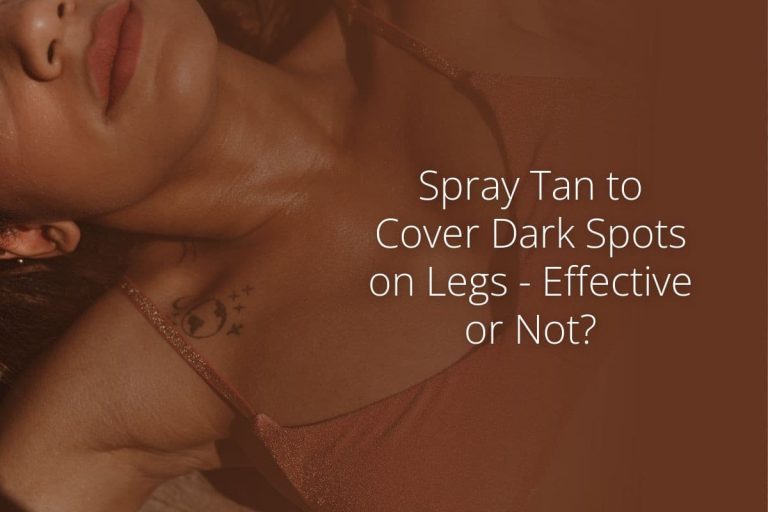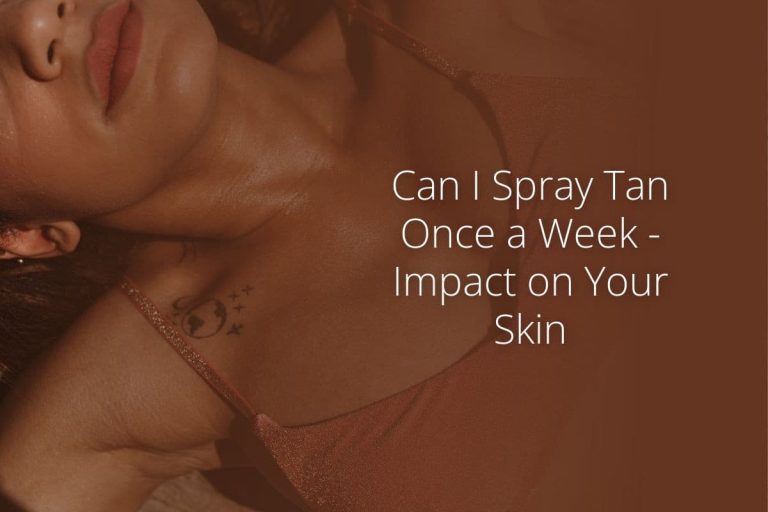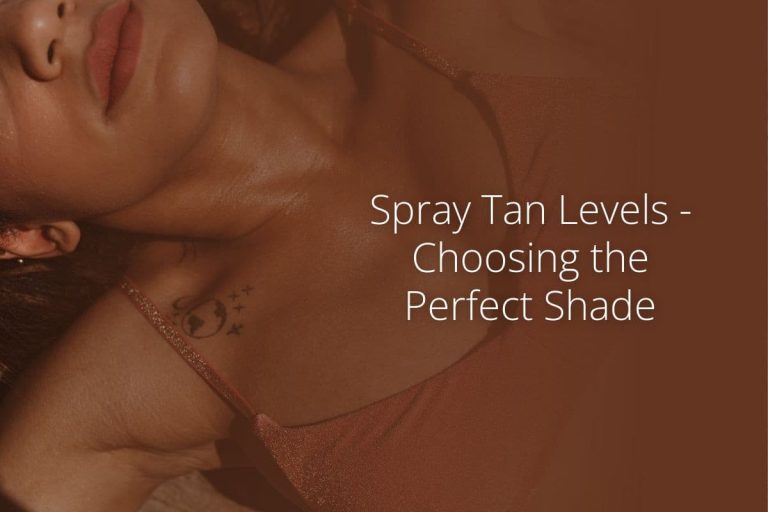
Spray tanning has become an increasingly popular method of achieving a golden glow without the harmful exposure to UV rays. It’s a quick, easy, and safe way to get that sun-kissed look any time of the year. But have you ever wondered what exactly is in that solution that’s being sprayed onto your skin? Is it safe? What are the active ingredients? Let’s delve into the contents of a typical spray tan solution.
The main active ingredient in most spray tan solutions is Dihydroxyacetone (DHA). DHA is a colorless sugar that interacts with the dead cells located in the stratum corneum of the epidermis. This interaction leads to a color change, which gives you that tanned look. Other common ingredients found in spray tan solutions include water, alcohol, aloe vera, and various skin conditioners. Some solutions may also contain a bronzer for instant color.
It’s important to note that different brands may use varying combinations of ingredients in their spray tan solutions. So, it’s crucial to explore and find the professional spray tan solution that suits your preferences and skin type best.
In the following sections, we’ll go deeper into these key ingredients and their functions, and explore how they contribute to achieving a stunning spray tan solution for yourself.
Understanding DHA and Other Ingredients in Sunless Tanning
DHA, also known as dihydroxyacetone, is the solution for our clients who want a sunless tanning product. It takes center stage as the primary active ingredient. This remarkable solution interacts with the amino acids in the outermost layer of our clients’ skin to produce a temporary tan effect without exposure to harmful UV rays.
But DHA isn’t the only ingredient working its magic. Sunless tanning solutions often contain a blend of other beneficial components that contribute to both the appearance and health of our skin. Let’s take a closer look at some common ingredients you’ll find in professional spray tan solutions.
- To prevent dryness and maintain skin hydration, many sunless tanners incorporate moisturizing agents like glycerin or hyaluronic acid. These moisturizing agents are a great solution for keeping the skin hydrated. These skincare products are the perfect solution to keep your skin feeling soft and supple while enhancing the overall tan.
- Antioxidants: Powerful antioxidants such as vitamin E or green tea extract are frequently added to sunless tanning formulas as a solution. These spray tan solution ingredients help neutralize free radicals, protecting your skin from damage caused by environmental stressors.
- Skin-nourishing agents: Some sunless tanning solutions go above and beyond by including nourishing ingredients like aloe vera or chamomile extract. These botanical extracts offer a solution with their soothing properties, promoting healthier-looking skin alongside your radiant tan.
When selecting a spray tan solution, it’s crucial to read product labels carefully and understand how each ingredient contributes to the formulation. This knowledge empowers you to make informed choices about spray tan solution based on your preferences and skincare needs.
By grasping the significance of DHA as well as other supporting ingredients like moisturizers, antioxidants, and skin-nourishing agents, you can achieve a flawless sun-kissed glow while simultaneously caring for your skin’s well-being. So next time you reach for that self-tanner bottle, remember that there’s more than meets the eye – or should we say, more than meets the skin!
Now that we’ve explored the key ingredients in sunless tanning solutions, you’re equipped with valuable insights to navigate the world of self-tanning products. Embrace your newfound knowledge and enjoy a gorgeous tan that leaves you feeling confident and radiant.
The Safety of Spray Tans: Can They Cause Cancer?
- There is no scientific evidence linking spray tans or their ingredients to an increased risk of cancer.
- DHA, the main ingredient in spray tan solution responsible for coloring the skin, has been approved by regulatory authorities as safe for topical use.
- It’s important to follow safety precautions during application and avoid inhaling or ingesting spray tan solution.
- If you have concerns about potential risks, consult with a healthcare professional before using spray tans.
Spray tanning has become a popular alternative to sunbathing or using tanning beds. But what about the safety aspect? Let’s take a closer look at whether spray tans can cause cancer.
- No Evidence of Increased Cancer Risk: Numerous studies have been conducted, and they consistently show that there is no scientific evidence linking spray tans or their ingredients to an increased risk of cancer. So, you can rest assured that getting a spray tan won’t put you at higher risk for skin cancer.
- DHA Approval: The main ingredient in most spray tan solutions is DHA (dihydroxyacetone). This spray tan solution chemical reacts with the amino acids in the outermost layer of your skin, causing it to darken temporarily. Regulatory authorities such as the Food and Drug Administration (FDA) have approved spray tan solution, specifically DHA, as safe for topical use on the skin.
- Safety Precautions: While spray tans are generally considered safe, it’s essential to take some precautions during application. Avoid inhaling or ingesting the spray tan solution by covering your nose and mouth with a protective mask or cloth. Protect your eyes by wearing goggles or closing them tightly while being sprayed.
- Consulting Healthcare Professionals: If you still have concerns about potential risks associated with spray tans, it’s always wise to consult with a healthcare professional. They can provide personalized advice based on your specific health situation and address any questions or doubts you may have.
Key Ingredients to Know in Spray Tan Solutions
- DHA: This active ingredient is responsible for creating a temporary bronzed effect on the skin surface without the need for UV radiation exposure. It gives you that instant tan you desire.
- Erythrulose: Working alongside DHA, erythrulose helps provide a longer-lasting tan. It reacts with amino acids on the skin’s surface, resulting in a tan that lasts longer than just DHA alone.
- Moisturizing Agents: To prevent dryness and maintain hydration levels during and after application, spray tan solutions often contain moisturizing agents like glycerin or hyaluronic acid. These ingredients help keep your skin feeling soft and hydrated.
- Antioxidants: Spray tan solutions may also include antioxidants such as vitamins C and E. These antioxidants help protect your skin from free radicals while promoting a healthier-looking tan.
Understanding the key ingredients is essential. The following are some of the important ingredients found in spray tan solutions:
- Dihydroxyacetone (DHA): This active ingredient is responsible for producing a temporary bronzed effect on the skin surface without exposure to UV radiation.
- Erythrulose: Another common ingredient found in spray tan solutions, erythrulose works alongside DHA to provide a longer-lasting tan by reacting with amino acids on the skin’s surface.
- Moisturizing agents: Glycerin or hyaluronic acid are often included in spray tan solutions as moisturizing agents. They help prevent dryness and maintain hydration levels during and after application.
- Antioxidants: Vitamins C and E are commonly added to spray tan solutions as antioxidants. These antioxidants help protect the skin from free radicals while promoting a healthier-looking tan.
By knowing these key ingredients, you can make informed choices when selecting your preferred spray tan solution products. Remember to always follow the instructions provided by the manufacturer for optimal results.
Ingredients to Avoid in Spray Tan Solutions
- Parabens, sulfates, and phthalates: These ingredients are commonly avoided in spray tan solutions due to their potential to cause skin irritations or sensitivities.
- Artificial fragrances and dyes: Some individuals may experience allergic reactions or skin irritation from these additives found in spray tan solutions.
- Alcohol-based ingredients: Spray tan solutions containing alcohol can be drying to the skin, which may result in an uneven or patchy tan.
- It’s important to check product labels for these potentially harmful ingredients if you have known sensitivities or allergies.
By avoiding spray tan solutions with parabens, sulfates, phthalates, artificial fragrances, dyes, and alcohol-based ingredients, you can minimize the risk of experiencing negative effects on your skin. Always prioritize products that are free from these substances if you want a safe and pleasant tanning experience.
The Mystery Behind the Fake Tan Smell
The distinctive smell often associated with fake tans is caused by the reaction between DHA and amino acids on the skin’s surface. This chemical reaction gives rise to that familiar scent that some people love, while others find it less appealing.
To address this issue, many spray tan solutions include fragrance additives to mask this odor, resulting in a more pleasant experience during application. These added scents can give the tan a refreshing aroma and make the process more enjoyable for users.
However, if you prefer a fragrance-free option or want to minimize the lingering smell after application, there are alternatives. You can opt for unscented spray tan solutions or choose organic brands that use natural fragrances instead of synthetic ones. Using scented moisturizers after applying your tan can help mask any remaining odor.
Proper ventilation during application is also crucial in reducing any unpleasant odors. Ensuring there is adequate airflow in the room where you’re applying your spray tan can help dissipate the smell and prevent it from lingering.
Comparing the Safety of Spray Tans and Sun Tanning
Now that we’ve explored the key ingredients in spray tan solutions, it’s time to compare the safety of spray tans and sun tanning. While both methods can give you a beautiful bronzed glow, there are some important differences to consider.
Spray tans offer a safer alternative to sun tanning because they don’t expose your skin to harmful UV rays. This reduces the risk of skin damage, premature aging, and even skin cancer. By understanding the key ingredients in spray tan solutions, you can make informed choices about what goes onto your skin.
So next time you’re looking to get that golden tan without baking under the sun, consider opting for a spray tan instead. Your skin will thank you!
FAQs
Can I apply a spray tan myself at home?
Absolutely! Many spray tan solutions are available for home use. Just make sure to follow the instructions carefully and exfoliate your skin beforehand for an even application.
How long does a spray tan typically last?
The longevity of a spray tan depends on various factors such as your skincare routine and how well you take care of your skin afterward. On average, a spray tan can last anywhere from 5-10 days.
Will a spray tan protect me from getting sunburned?
No, a spray tan does not provide any protection against sunburns. It is still essential to apply sunscreen when exposing your skin to sunlight.
Can pregnant women get a spray tan?
While DHA is generally considered safe for external use during pregnancy, it’s always best to consult with your healthcare provider before getting any beauty treatments during pregnancy.
Are there any special precautions I should take before getting a spray tan?
To ensure optimal results from your spray tan, it’s recommended to exfoliate and moisturize your skin beforehand. Avoid applying any lotions or oils on the day of your appointment, and wear loose-fitting clothing to prevent smudging.






